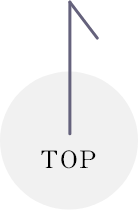- A new immunotherapy using fourth generation Gc-MAF -
Macrophages are immune cells that make up about 5% of white blood cells that protect the body from foreign invaders, and are the main cells that control the immunity that we are born with (called innate immunity). Innate immunity is the body’s defense system that attacks bacteria and viruses that we have never encountered before. This is probably the result of the long history of humankind having acquired receptors that recognize the protein structures common to microorganisms that are harmful to the human body. The ability of these cells weakens with age, which is thought to be one of the reasons why older people become more susceptible to infections. Macrophages also have the ability to phagocytose cancer cells, release inflammatory cytokines such as TNF (tumor necrosis factor), and induce apoptosis in cancer cells. Research is underway to activate macrophages, which have these functions, and apply them to cancer treatment.
In addition to NK cell therapy, our hospital has also begun focusing on macrophage activation therapy and offering it to patients with difficult-to-treat cancers.
In 1991, Dr. Nobuhito Yamamoto of Japan discovered the first generation Gc-MAF protein in human serum as a substance that activates macrophages. Later, a highly stable and highly concentrated second generation Gc-MAF was developed, but because it uses human blood, there were safety issues and the administration route was limited to subcutaneous, intramuscular, and intravenous injection, so an orally available third generation Gc-MAF was developed. The third generation can be produced without using blood, so there is no risk of infection and it is currently the mainstream. However, it has recently been discovered that there are anti-tumor M1 macrophages and immunosuppressive M2 macrophages. The latter have the function of repairing tissue after inflammation and have anti-inflammatory effects. Therefore, if you want to suppress the progression of aging and expect a better anti-aging effect, it is better to activate M2 macrophages, but as the disease progresses, M2 macrophages become dominant within the tumor, and the tumor grows due to the formation of new tumor blood vessels and immunosuppression. Rather, anti-aging requires increasing the activity of the enemy M1 macrophages to attack tumors. Third-generation Gc-MAF activates both M1 and M2 macrophages indiscriminately, so it did not have the expected anti-tumor effect. Therefore, the newly developed next-generation Gc-MAF (fourth-generation Gc-MAF) activates M1 macrophages to a degree that does not cause side effects, and exerts an anti-tumor effect. At our hospital, we have introduced this fourth-generation Gc-MAF and are using it in combination with NK cell therapy to improve the immune function of cancer patients and propose treatment with the goal of suppressing the progression of cancer.
Treatment schedule and cost
Macrophage activation therapy (fourth generation Gc-MAF therapy)
Content: Oral administration twice a week
Duration: Cancer treatment 3 months per course (administered twice a week)
Cost: 1 vial 80,000 yen (excluding tax)
Cancer treatment 24 vials (1 course) 1,920,000 yen (excluding tax)







